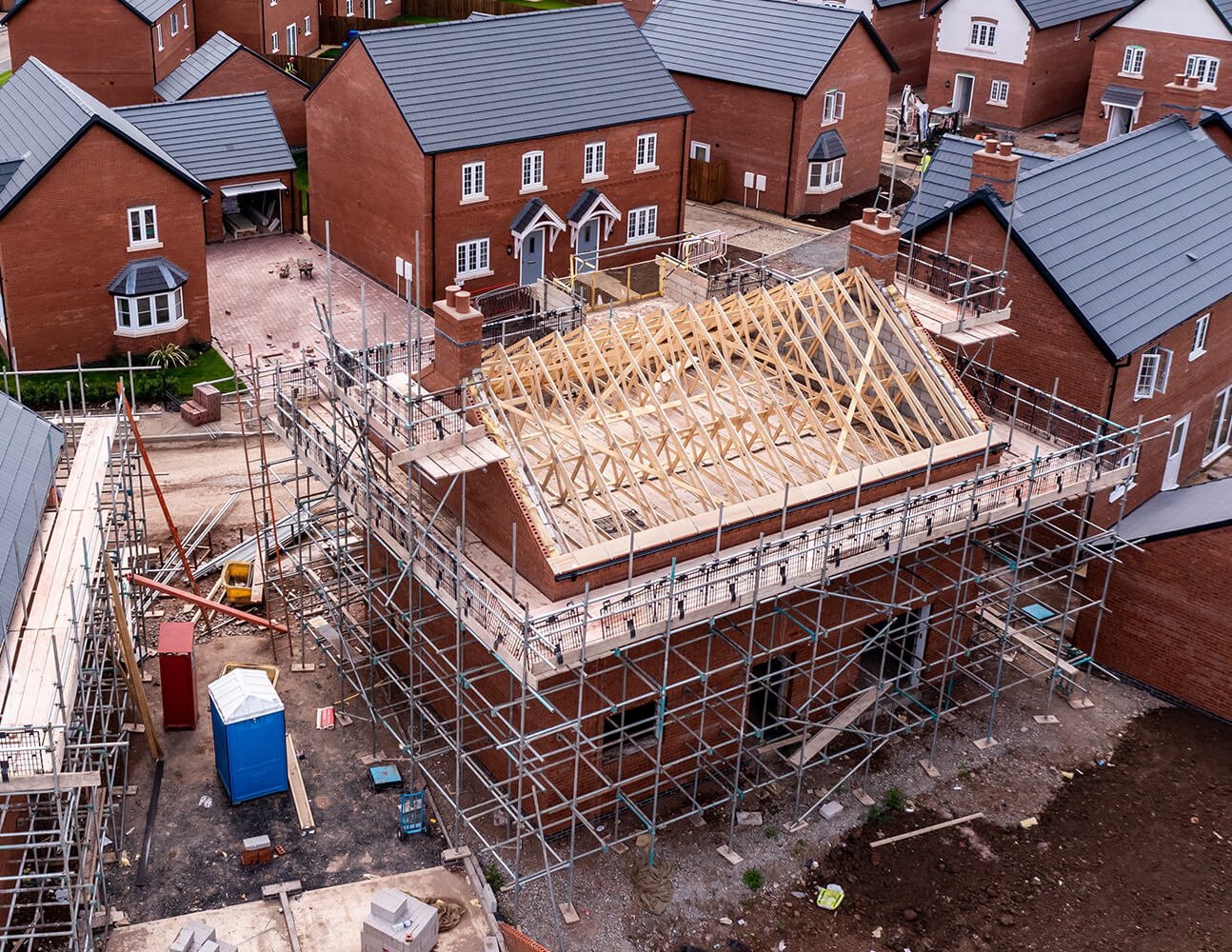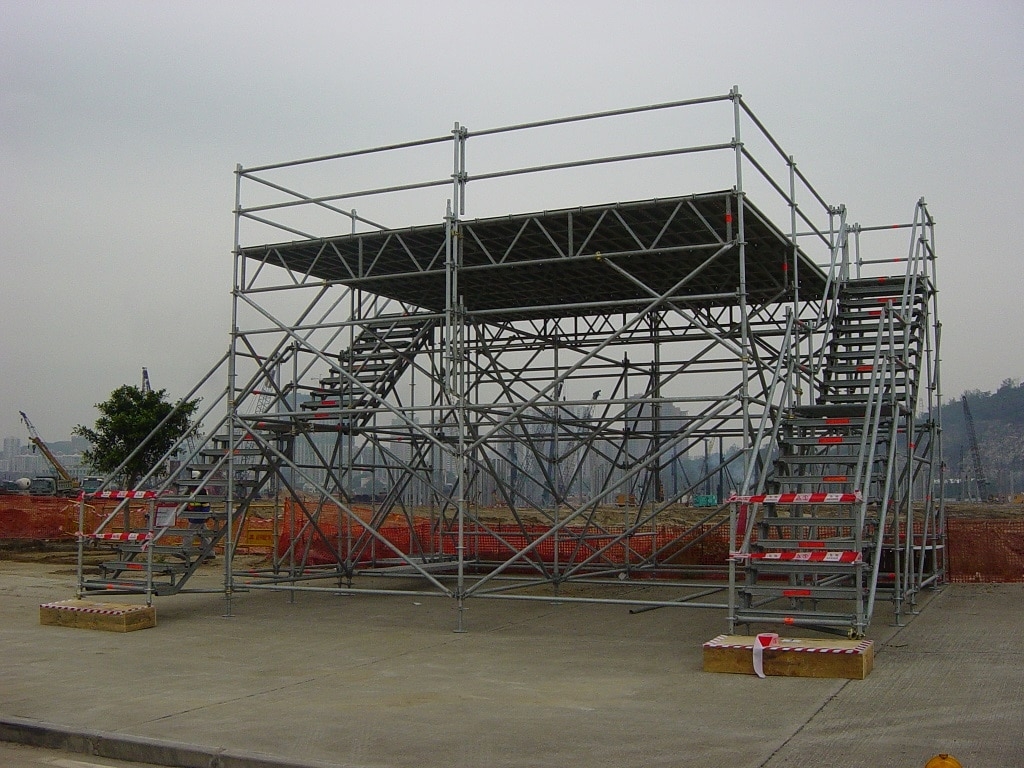Residential Scaffolding Solutions for Safe and Efficient Home Improvements
Residential Scaffolding Solutions for Safe and Efficient Home Improvements
Blog Article
A Comprehensive Overview to the Essential Functions of Scaffolding in Modern Building And Construction
The landscape of contemporary building increasingly depends on efficient scaffolding systems that prioritize performance, advancement, and security. As tasks expand in intricacy, comprehending the vital attributes of scaffolding becomes critical for making certain employee safety and security and maximizing job timelines. This overview explores numerous sorts of scaffolding, highlights crucial security functions, and checks out product advancements that add to performance and sustainability. The ramifications of these aspects prolong far past mere building and construction methods, prompting a closer look at exactly how they affect total job success and employee health.
Kinds Of Scaffolding
Although scaffolding systems can vary commonly in layout and application, they normally fall into numerous distinctive groups that satisfy different building and construction demands - Scaffolding. The most typical types consist of supported scaffolding, put on hold scaffolding, and rolling scaffolding
Supported scaffolding is composed of platforms supported by a structure of poles, which supply a steady and elevated functioning surface. This type is normally used for jobs that call for substantial elevation, such as bricklaying or external painting.
Suspended scaffolding, alternatively, is utilized for jobs needing accessibility to high elevations, such as cleansing or fixing structure facades. This system hangs from a roof or one more framework, allowing employees to reduced or raise the system as needed.
Moving scaffolding functions wheels that allow for easy mobility throughout a work website. It is particularly beneficial for jobs that call for frequent relocation, such as interior operate in big areas.
Each kind of scaffolding is made with certain applications in mind, making sure that building and construction tasks can be accomplished successfully and effectively. Understanding these classifications is vital for choosing the appropriate scaffolding system to fulfill both job needs and website conditions.
Trick Security Attributes
Safety and security is extremely important in scaffolding systems, as the potential threats connected with functioning at heights can bring about significant accidents otherwise effectively taken care of. Secret safety and security functions are necessary to guarantee the wellness of employees and the honesty of the building website.
Primarily, guardrails are crucial. These obstacles provide a physical protect versus falls, considerably minimizing the threat of significant injuries. In addition, toe boards are typically made use of to stop tools and products from diminishing the scaffold, protecting workers listed below.
An additional vital part is using non-slip surface areas on platforms. This feature enhances grasp, specifically in damaging climate condition, therefore lessening the likelihood of drops and slides. In addition, gain access to ladders should be safely positioned to help with risk-free entrance and departure from the scaffold.
Regular evaluations and upkeep of scaffolding systems are additionally important. These assessments make sure that all parts remain in excellent condition and working properly, dealing with any wear or damages quickly.
Finally, correct training for all employees associated with scaffolding operations is important to ensure that they understand safety and security procedures and can recognize potential risks. Scaffolding. Jointly, these features create a safer working environment and substantially minimize risks connected with scaffolding
Product Technologies
Developments in product science have actually considerably influenced the scaffolding industry, boosting both safety and efficiency in modern-day building and construction. The introduction of high-strength steel and aluminum alloys has changed standard scaffolding systems.
Additionally, innovative composite materials, such as fiberglass-reinforced plastics, have become viable alternatives. These materials are immune to deterioration and ecological deterioration, thus extending the life-span of scaffolding systems, specifically in harsh weather condition problems. Making use of such materials adds to reduce upkeep prices and ensures constant performance in time.


Style Factors To Consider
Thinking about the complexities of modern-day construction jobs, effective scaffolding design is vital to making sure both anonymous functionality and safety and security. Layout factors to consider must include various factors, consisting of lots capacity, elevation, and the certain requirements of the building website. Each task presents distinct challenges, demanding a versatile approach to scaffolding systems that can adapt to differing problems.
Structural stability is crucial; as a result, designers should determine the loads that the scaffolding will sustain, including workers, products, and tools. The selection of materials plays a critical function in guaranteeing the scaffolding can stand up to these loads while staying light-weight and sturdy. Additionally, the layout needs to permit simple access and egress, assisting in the smooth motion of products and personnel.
Safety and security features, such as guardrails and non-slip surface areas, ought to be included to decrease threats of accidents. In addition, the design should take into consideration the surrounding environment, including adjacent structures and possible threats. By dealing with these layout considerations, building and construction firms can enhance the performance of scaffolding systems and advertise a safer working setting, eventually adding to the general success of the project.
Upkeep and Evaluations
The effectiveness of scaffolding systems expands past preliminary design and implementation; recurring maintenance and routine assessments are vital to guaranteeing their proceeded efficiency and safety and security throughout the period of a project. Routine evaluations need to be performed by certified personnel to determine any kind of indicators of wear, damage, or instability that can jeopardize the integrity of the scaffolding.
Upkeep protocols need to consist of regular checks of architectural elements, such as planks, fittings, and structures, making sure that all aspects stay safe and cost-free from rust or various other damage. Furthermore, the performance of safety functions, such as guardrails and toe boards, need to be assessed to guarantee conformity with safety regulations.
Documentation of all examinations and maintenance activities is vital for accountability and regulatory conformity. An organized method to record-keeping not just aids in tracking the condition of the scaffolding yet likewise supplies essential evidence in case of a case.
Ultimately, developing a thorough upkeep and assessment schedule will considerably lower the danger of mishaps and boost the total safety of the building site. By focusing on these practices, building supervisors can secure employees and support the task's honesty.

Final Thought
Finally, the essential webpage attributes of scaffolding in modern building and construction encompass a variety of important elements, consisting of varied types, crucial security systems, material innovations, and thoughtful layout considerations. Emphasizing safety and security through guardrails and non-slip surfaces, along with advancements in products like high-strength steel, boosts both performance and sustainability. Normal upkeep and examinations are important for ensuring structural stability and safety on building sites, inevitably promoting effective job implementation and promoting the well-being of employees.
The landscape of contemporary construction significantly relies on reliable scaffolding systems that prioritize development, safety and security, and effectiveness.Innovations in product science have actually considerably influenced the scaffolding sector, boosting both safety and security and efficiency in contemporary building. On the whole, these material innovations not only enhance the performance and safety of scaffolding systems however likewise align with the market's push in the direction of sustainability, as several modern products are designed to be extra eco friendly.
Considering the complexities Full Report of modern-day building projects, reliable scaffolding layout is paramount to making certain both capability and safety.In final thought, the essential functions of scaffolding in contemporary building and construction incorporate a range of critical aspects, including varied kinds, vital security mechanisms, product technologies, and thoughtful design considerations.
Report this page